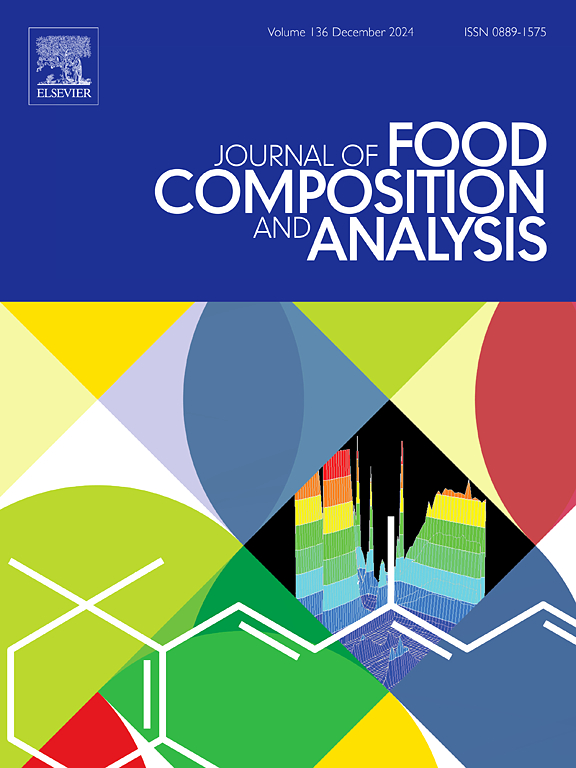A circular economy framework for Tinca tinca valorization for stuffed Spanish-style table olive
IF 4
2区 农林科学
Q2 CHEMISTRY, APPLIED
引用次数: 0
Abstract
The aim of this work was to optimize the production of Spanish-style fermented green olives stuffed with tench by-products and study their aromatic profile. The stuffed prepared were: E1: fumet, E2: frying, E3: dehydration, and E4 by addition of frying oil to tench by-products. Triangular sensory analysis was able to differentiate samples according to their characteristic aroma (> 94 %), and descriptive sensory analysis showed that E1 and E2 were the highest rated processes. A PCA analysis of the sensory analysis showed a good discrimination of the experimental treatments (87 %). In addition, a higher amount of positive volatile aromatic compounds was found in olives using these stuffings. The PCA analysis of these volatile compounds explained 87.2 % of the variance and allowed to classify the experimental treatments. The electronic nose was also sensitive to the different organic volatile compounds of the samples. Thus, the PC1 explained 85.8 % of the variance while PC2 the 11.8 %. Therefore, this devise could be used to classified samples according to the aromatic profile.
求助全文
约1分钟内获得全文
求助全文
来源期刊

Journal of Food Composition and Analysis
工程技术-食品科技
CiteScore
6.20
自引率
11.60%
发文量
601
审稿时长
53 days
期刊介绍:
The Journal of Food Composition and Analysis publishes manuscripts on scientific aspects of data on the chemical composition of human foods, with particular emphasis on actual data on composition of foods; analytical methods; studies on the manipulation, storage, distribution and use of food composition data; and studies on the statistics, use and distribution of such data and data systems. The Journal''s basis is nutrient composition, with increasing emphasis on bioactive non-nutrient and anti-nutrient components. Papers must provide sufficient description of the food samples, analytical methods, quality control procedures and statistical treatments of the data to permit the end users of the food composition data to evaluate the appropriateness of such data in their projects.
The Journal does not publish papers on: microbiological compounds; sensory quality; aromatics/volatiles in food and wine; essential oils; organoleptic characteristics of food; physical properties; or clinical papers and pharmacology-related papers.
 求助内容:
求助内容: 应助结果提醒方式:
应助结果提醒方式:


